|
|
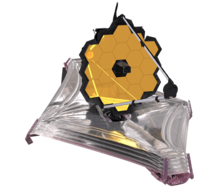
by Dayanara Flores Gonzalez, age 14
The National Aeronautics and Space Administration, also known as NASA, launched their newest invention, the James Webb Space Telescope in December of 2021. It was intended to replace its predecessor: the Hubble Space Telescope. The new telescope took flight from a launch site in French Guiana, located in South America. An Arianespace Ariane 5 rocket launched the telescope into space.
The James Webb Space Telescope is NASA’s biggest and most powerful space science telescope yet. It is one of NASA’s huge space instruments and it is similar to the Hubble but with improvements that will reveal new details. It took the new telescope 30 days to travel about a million miles and reach its destination, a stable gravitational location in space also known as a Lagrange point, or L2.
The telescope arrived at L2 on January 24, 2022. L2 is a spot in space near the Earth that lies opposite from the sun. The orbit will allow the telescope to stay in line with Earth as it orbits the sun. According to NASA, this new telescope will focus on four main areas: first light in the universe, birth of stars, protoplanetary systems and planets.
[read more]
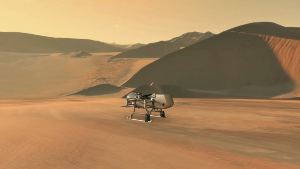
by Theodore B. Morrison, age 14
Titan, a moon of Saturn, will soon host a new drone mission by NASA, nicknamed “Dragonfly.” The mission will aim to answer questions related to the moon's Earth-like environment.
The Saturn moon only has 14% of Earth’s gravity but shares geological features such as valleys, mountain ridges, mesas, and dunes. During one recent mission, a probe broadcasted a 2.5-hour film to NASA as it descended into Titan’s atmosphere. The broadcast revealed the presence of ice and shorelines, similar to Earth.
Titan houses one of the only sanctuaries for living organisms to exist in this solar system. The organism in Titan has been labelled as tholins and are complex organic molecules that have been subjected to radiation and sunlight for long swathes of time.
[read more]
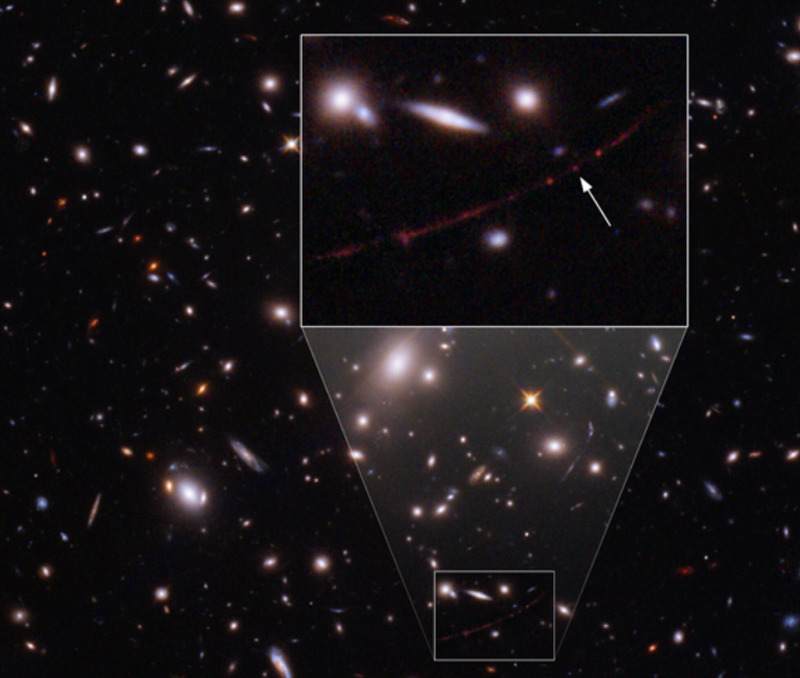
by Hiba Al-Quraishi, age 14
Have you ever wondered how far away the most distant star is? Or how NASA discovers such distant things in our universe?
The Hubble Space Telescope is a partnership between NASA and the European Space Agency. During Hubble’s 32-year lifespan, it has helped NASA make more than 1.5 million observations. The Hubble, which has helped discover black holes, merging galaxies, interstellar objects, and even moons surrounding Pluto, is located 340 miles above Earth.
Thanks to this telescope, NASA managed to get their hands on an unprecedented image of the farthest star discovered so far, Earendel, which means “morning star” in Old English. NASA assumes that Earendel is about 50 times the mass of our sun and is millions of times more scintillating. The star appeared less than a billion years after the Big Bang which occurred around 13.8 billion years ago. The star is located 12.9 billion light-years from Earth. “We don’t know yet if it’s part of the very first generation of stars,” says Brenda Fyre, an astronomer from the University of Arizona and co-author of an article describing the discovery.
[read more]
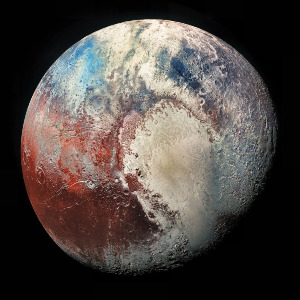
by Dulce Maria Vazquez, age 13
Pluto was discovered in 1930 by Clyde Tombaugh. Pluto was once considered the ninth planet but was demoted to a dwarf planet in 2006.
On June 22nd, 1978, an American astronomer named James Christy discovered that Pluto has a large moon and is very tiny and frosty in comparison to other planets. For this reason, scientists believe Pluto is actually not a planet at all, but a frosty planetesimal.
Frosty planetesimals were most likely formed inside the Kuiper Belt. The amount of gravity belonging to the gas giants sent most of them flying around planets. Most planetesimals were destroyed inside collisions, while some turned into moons. Other planetesimals that were tossed out formed space’s Oort Cloud.
[read more]
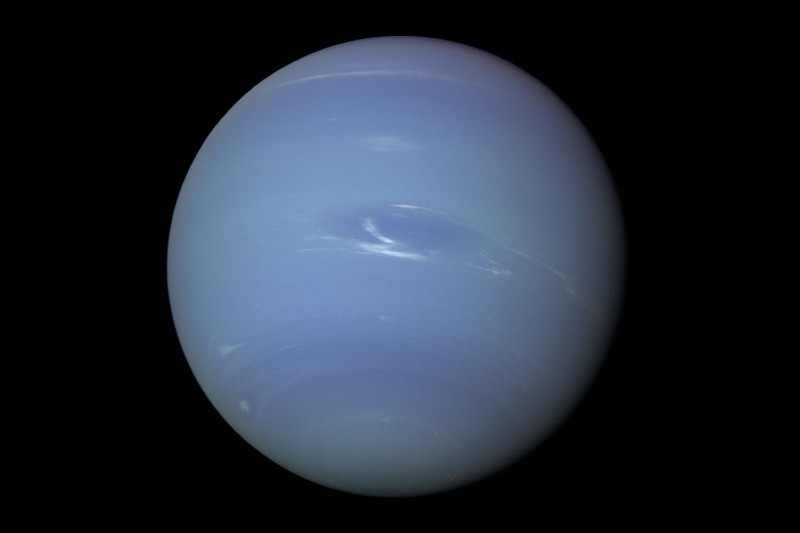
by Theodore B. Morrison, age 13
There are many mysteries surrounding the planet Neptune, but one in particular has sparked interest in the scientific community: a storm whose actions are still puzzling scientists.
A storm was first observed in 1989 by the Voyager 2 (currently the only spacecraft to reach Neptune). This storm had a companion storm that was smaller and was nicknamed “Scooter.” When the Hubble telescope was launched in 1993, scientists were once again able to see storms on Neptune. In 2018 another storm nicknamed “Dark Spot” was spotted traveling towards the equator of Neptune, but then in January of 2020 it changed directions heading north. At the same time, a smaller companion storm nicknamed “Dark Spot Jr.” was observed.
The Dark Spot is 4,600 miles across, which is larger than the Atlantic Ocean. These storms on Neptune are observed to last 2-5 years, which is short in comparison to storms on other distant planets. Scientists find Neptune’s storms hard to study due to their relatively short duration.
[read more]
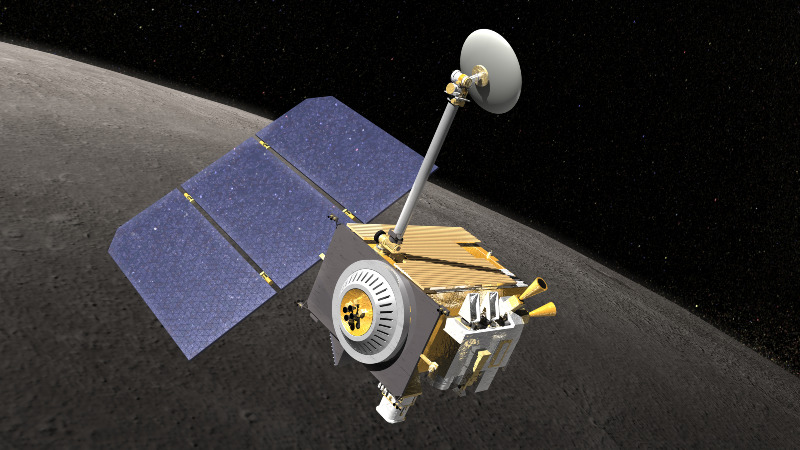
by Makya Rodriguez, age 15
NASA scientists have now concluded that more water exists on the moon than previously believed. Using a satellite orbiting the moon, NASA has confirmed that there is water on both the sunlit and shadowed parts of the moon.
This information may help advance future lunar missions. “If we're right, water is going to be more accessible for drinking water, for rocket fuel, everything that NASA needs water for” said scientist Paul Hayne, who led the study.
The study was conducted using an aircraft called SOFIA (Stratospheric Observatory for Infrared Astronomy), which carries a 2.7 meter telescope.
[read more]
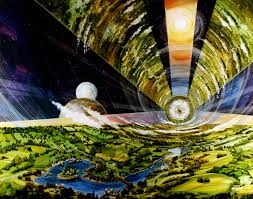
by Sandy Flores, age 13
Did you know that one day Earth may no longer be habitable?
If this becomes a reality, people will have to learn how to adapt to life in outer space. Scientists are envisioning what is needed to live in space. Humans will have to learn how to do this since Earth will no longer have the capacity to hold them. Most of humanity would die if this happened. The survivors who remain alive will have to learn how to adapt to life in a capsule.
In these space capsule colonies there will be food, air, water, and some artificial “gravity.” There will need to be enough soil to grow crops. Oxygen will still be available because there would be trees planted in the human space capsules that will absorb our carbon dioxide and release oxygen that we could use.
[read more]
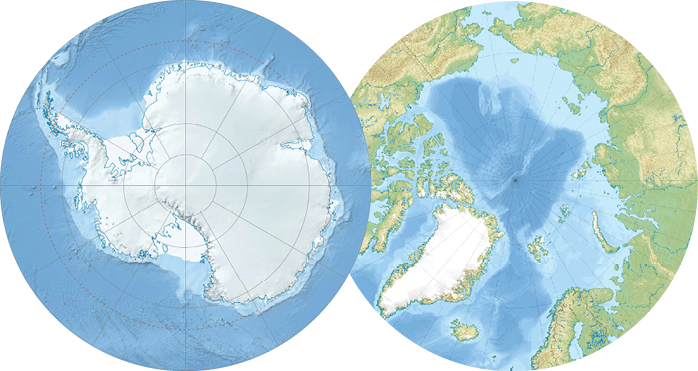
by Felix Berkelman, age 14
Although one might think the Arctic and Antarctic seem basically the same climate wise, they are actually noticeably different. Likewise, they are also affected differently by climate change. Both areas have melting ice, however the two poles have it for a different reason.
The main reason for the difference in climate is the positioning of land around the poles. The North Pole consists of an ocean surrounded by land, while the South Pole is the opposite, a land mass surrounded by ocean. Although this detail may seem meaningless, it actually has a drastic effect on the temperature of the poles.
The Southern Ocean is the only place where there is a ring of ocean, unbroken by land, surrounding the earth. This causes ocean currents to circle Antarctica in what is known as the Circumpolar Current. This current is one of the strongest in the world, and causes massive waves in the Southern Ocean. These waves make countries like South Africa and New Zealand ideal for surfing, but make reaching Antarctica a difficult ordeal. The Circumpolar Current also insulates the continent from warmer air farther north, making it much colder than the Arctic.
[read more]
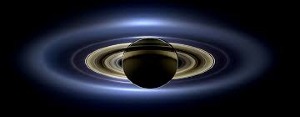
by Sarah Thomson, age 13
Saturn's thick rings, which make it so unique in the Solar System, are not permanent. According to data first gathered from Earth-based observations, a phenomenon called “ring rain” pulls material from Saturn's rings into the planet. Subsequent data from the Cassini spacecraft shows even more inflow going from the rings to the planet. Combined these mean Saturn's rings could be gone in as little as 100 million years: not long in terms of the Solar System.
Ring rain is caused by Saturn's gravitational pull on its rings. One theory of why this is that relatively recently a comet may have destabilized the rings, making them more vulnerable to being pulled in. Another is that the innermost ring, called the D ring, pulls in material from the outer rings, allowing it to exist for so long despite the rapid rate of its depletion from ring rain. While ring rain was originally thought to be made of mostly water, like the rings are themselves, data from the Cassini spacecraft puzzlingly shows that water makes up only 24 percent of the falling rain. Other molecules in the rain include organic material, methane, carbon monoxide, and dinitrogen. A lot about ring rain is not yet certain.
[read more]
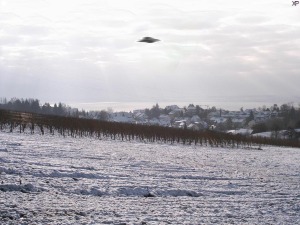
by Armani Stovall, age 12
Have you ever heard of or experienced a U.F.O. sighting? Cheryl Costa and Linda Miller Costa, authors of “U.F.O. Sightings Desk Reference,” do believe U.F.O.'s are real. They say that there have been so many sightings that they cannot be fake. Studies show that most sightings happen in the summer in the western states of the USA, such as California.
What would it be like to be one of the people who saw a U.F.O.? Imagine how a man in Tribeca, a neighborhood in New York City reacted to seeing a U.F.O. It happened on September 17, 2011. He was on a roof at the New Museum in New York. In a split second he saw a diamond-shaped object with lights that lit up the sky. He came to the conclusion that it was a U.F.O.
[read more]
More Space Science Articles
Titan, a moon of Saturn, will soon host a new drone mission by NASA, nicknamed “Dragonfly.” The mission will aim to answer questions related to the moon's Earth-like environment.
The Saturn moon only has 14% of Earth’s gravity but shares geological features such as valleys, mountain ridges, mesas, and dunes. During one recent mission, a probe broadcasted a 2.5-hour film to NASA as it descended into Titan’s atmosphere. The broadcast revealed the presence of ice and shorelines, similar to Earth.
[read more...]
The National Aeronautics and Space Administration, also known as NASA, launched their newest invention, the James Webb Space Telescope in December of 2021. It was intended to replace its predecessor: the Hubble Space Telescope. The new telescope took flight from a launch site in French Guiana, located in South America. An Arianespace Ariane 5 rocket launched the telescope into space.
[read more...]
Have you ever wondered how far away the most distant star is? Or how NASA discovers such distant things in our universe?
[read more...]
The International Space Station is considered a constant symbol of humanity's achievements in the fields of space science and diplomacy. Many will be shocked to learn that the National Aeronautics and Space Administration (NASA) has plans to retire and crash the station straight into the ocean in 2031.
[read more...]
There are many mysteries surrounding the planet Neptune, but one in particular has sparked interest in the scientific community: a storm whose actions are still puzzling scientists.
[read more...]
Pluto was discovered in 1930 by Clyde Tombaugh. Pluto was once considered the ninth planet but was demoted to a dwarf planet in 2006.
[read more...]
Although one might think the Arctic and Antarctic seem basically the same climate wise, they are actually noticeably different. Likewise, they are also affected differently by climate change. Both areas have melting ice, however the two poles have it for a different reason.
[read more...]
If this becomes a reality, people will have to learn how to adapt to life in outer space. Scientists are envisioning what is needed to live in space. Humans will have to learn how to do this since Earth will no longer have the capacity to hold them. Most of humanity would die if this happened. The survivors who remain alive will have to learn how to adapt to life in a capsule.
[read more...]
Saturn's thick rings, which make it so unique in the Solar System, are not permanent. According to data first gathered from Earth-based observations, a phenomenon called “ring rain” pulls material from Saturn's rings into the planet. Subsequent data from the Cassini spacecraft shows even more inflow going from the rings to the planet. Combined these mean Saturn's rings could be gone in as little as 100 million years: not long in terms of the Solar System.
[read more...]
Exoplanets are Earth-like planets that orbit outside of our solar system. Cornell astronomers, Lisa Kaltenegger and Jack O’Malley-James, are discovering more about exoplanets one light year at a time.
[read more...]
The Sierra Nevada Corp. recently completed a 20-million-dollar facility on the site of the former Badger Army Ammunition plant near Baraboo. SNC’s goal is to test rocket engines in hope of making it an all-state division.
[read more...]
Have you ever heard of or experienced a U.F.O. sighting? Cheryl Costa and Linda Miller Costa, authors of “U.F.O. Sightings Desk Reference,” do believe U.F.O.'s are real. They say that there have been so many sightings that they cannot be fake. Studies show that most sightings happen in the summer in the western states of the USA, such as California.
[read more...]
Recent developments have uncovered huge termite mounds completely covering a vast area in northeastern Brazil, previously covered by thick forests. These masses of earth can be up to three meters tall, and up to ten meters wide. They cover an area roughly the size of England. The combined mass of all the mounds can be seen from low earth orbit, though it is difficult to see individual mounds from that height.
[read more...]
Imagine if water could be liquid and a solid, without being frozen. Scientists think that this substance could exist on two different planets, Neptune or Uranus.
[read more...]
The National Aeronautics and Space Administration (NASA) describes Near-Earth objects as comets and asteroids that are pulled into Earth’s orbit by gravity. NASA has put together a plan to prevent one of these objects from crashing into Earth and potentially causing the end of the world.
[read more...]
Space – the final frontier. Companies are inventing new ways to live – and thrive – in the vast blackness that surrounds us.
[read more...]
In a seemingly vacant desert lies possible secrets regarding one of the most popular conspiracy theories the world has ever known.
[read more...]
Man on the moon, how about man on Mars? Dava Newman, former Deputy Administrator of NASA, recently shared plans to develop the most powerful rocket to date. The rocket is called the Space Launch System (SLS). Currently an 18-inch, plastic model, it represents some of America’s greatest ambitions: with thrust forces greater than previous models, the rocket could take four people to Mars in the 2030’s—if everything goes according to plan, that is.
[read more...]
On August 17, 2017, a neutron star collision - one of the rarest events to happen in space - shook the universe with a cataclysmic explosion. Alarming scientists, gamma rays and gravitational waves blasted ultraviolet and infra-red lights.
[read more...]
Could there once have been life on Titan, one of Saturn's moons? Scientists say possibly. Titan is a huge, cold moon that orbits Saturn. Bigger than Pluto and Mercury, its atmosphere is unusually dense with nitrogen.
[read more...]
Titan, Saturn's “Mystery Moon,” is also its largest moon and the second largest moon in the entire solar system. Similar in size to the four largest satellites of Jupiter, Titan is much bigger than the planets Pluto and Mercury.
[read more...]
A few billion years ago, in a galaxy not so far, far away, before humans even existed, the universe was created. Scientists posit that the universe was formed about 13 billion years ago. Imagine a black, empty void followed by a flaming ball of dust and debris forming our universe; this theory is called the “Big Bang.”
[read more...]
Mars has intrigued and fascinated scientists and space enthusiasts since the advent of the telescope. Despite many obstacles, sustaining life on the “Red Planet” may soon become possible with recent advancements in technology.
[read more...]
Two of Jupiter’s 63 moons are thought to be “twins.” The two moons were formed at the same time and are the same shape and size, but they are far from identical.
[read more...]
Stars are fiery balls of hot gas that are constantly burning. Inside of each star, atoms of gas come together and create a nuclear reaction. This makes them rise in temperature to millions of degrees, creating a star's glow. As these stars shine, they release light, heat, radio waves, and radiation. But, when their nuclear fuel is used up, they no longer glow.
[read more...]
Since Apollo 17, human beings have not traveled more than 380 miles above the Earth's surface. But later this year, that will change. NASA is currently working to build a capsule designed to send astronauts more than 3,600 miles into deep space.
[read more...]
The moon and stars are not the Earth’s only natural nightlights. Comets, asteroids, and meteors travel through space and shine brightly, too. It is the distinct ways in which comets, asteroids, and meteors move that make them each unique.
[read more...]
While they might all look similar from Earth, stars actually differ in size, color, and temperature. However, all stars are born in and end the same way.
[read more...]
A fantastic discovery was made one night in 1844 by German astronomer, Friedrich Wilhelm Bassel. Bassel discovered a dark and mysterious force in the universe, now known as the black hole.
[read more...]
From Copernicus to Neil deGrasse Tyson, it seems as though humans have always been interested in going to space. The idea of space exploration began in 1957, with the launch of the first artificial satellite.
[read more...]
Titan, Saturn’s largest moon, was discovered in 1655 by Dutch astronomer, Christiaan Huygens. With a simple homemade telescope, he alerted the world to one of many secrets of the universe.
[read more...]
Billions of years ago there was a boom. According to scientific theory, that boom was the start of Universe. This idea is called the “Big Bang Theory.”
[read more...]
Mercury is our solar system’s innermost planet. It is a planet we all have heard about, but don’t know much about. Previously, scientists did not pay much attention to Mercury. But, in 2004, our view of Mercury changed when NASA sent a spacecraft called the Messenger to explore the mysterious planet. first paragraph
[read more...]
Did you know that the two nearest planets to Earth are Venus and Mars? Every planet circles the sun in a different amount of time, which is called a planet’s year. Venus takes 225 days to complete a year, Mars takes 687 days, and Earth takes 365 days.
[read more...]
|
|

